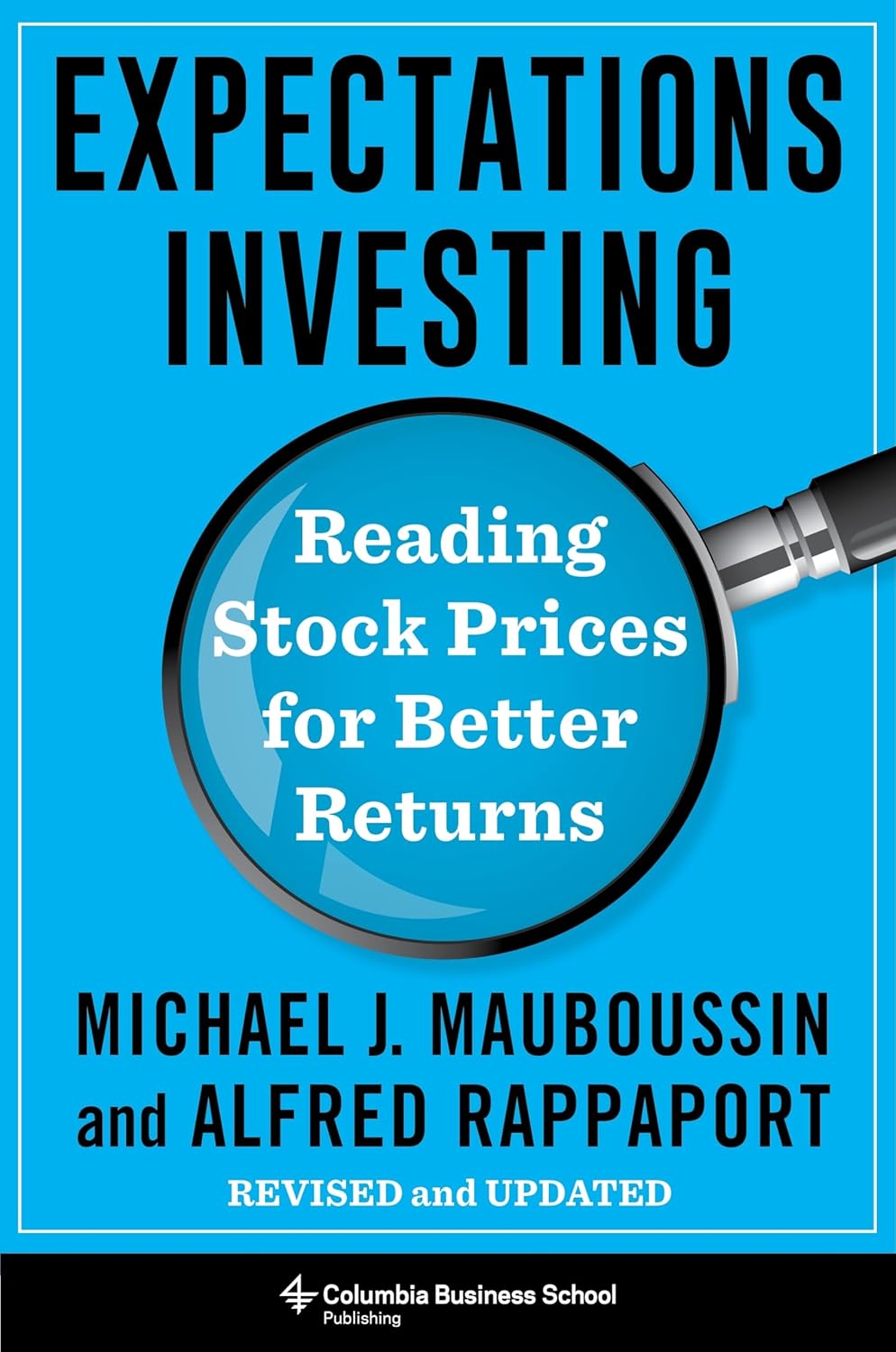This Week's Book: How to Reverse-Engineer Stock Prices
This past week, I reread Expectations Investing by Michael Mauboussin and Alfred Rappaport. The book is an advanced value-investing framework that investors can apply to public companies to understand price relative to expected value. I read the book this summer. The framework made sense at a high level, but it had many moving parts that left me less confident that I could actually apply it and understand the expectations implied in a public company’s stock price. I wanted to try using the framework right after reading the book, but I never got around to it.
So, I reread the book this month, focusing heavily on my highlights and notes from the first reading. I then spent time building a model for a public company I follow. After several days of part-time effort, I finally finished it. After finishing the model and reviewing the output, I have a new appreciation for this book and the expectations-investing framework. It’s definitely something I’ll use going forward.
One of my big takeaways was that although the framework seemed daunting at first, after working through it (and getting stuck several times), I better understood its component parts. Lots of intertwining formulas. Required data from external sources. And several other moving parts. More importantly, I was able to simplify some of the more complex calculations, such as the Perpetuity with Inflation method for estimating continuing value. Said differently, going through the steps of building a model and applying the framework helped me understand it deeply and figure out ways to simplify it.
I’m glad I reread this book and applied the framework. It deepened my learning and took my understanding of this framework to the next level.




